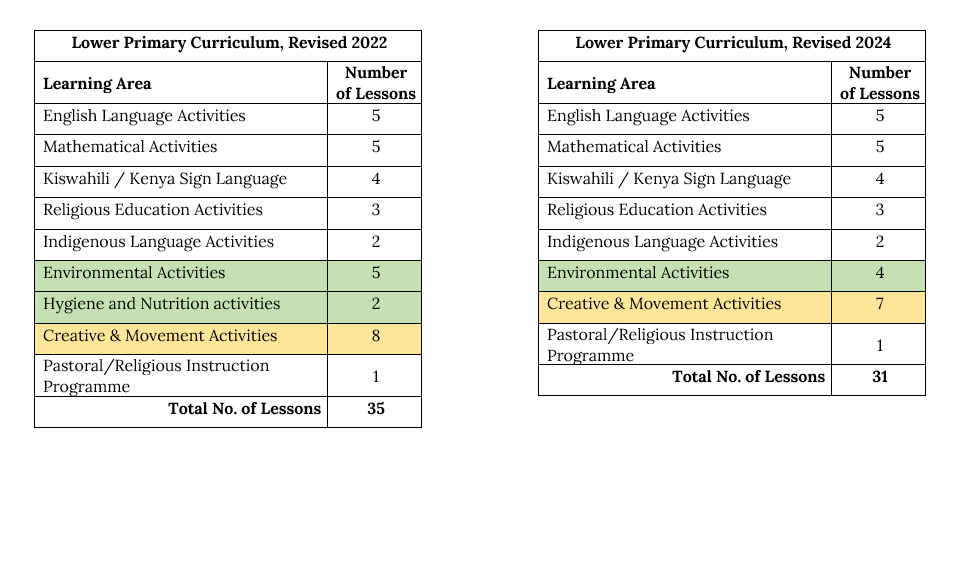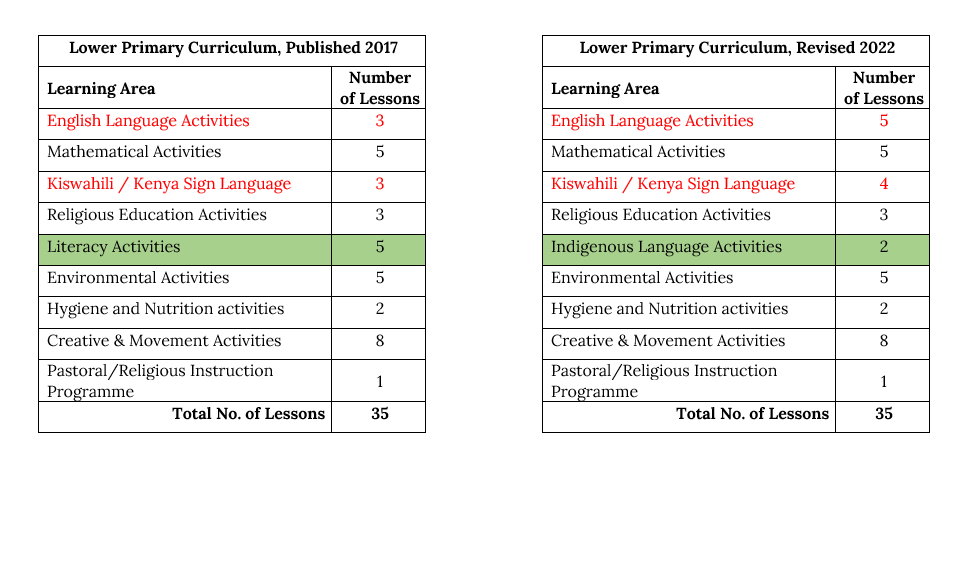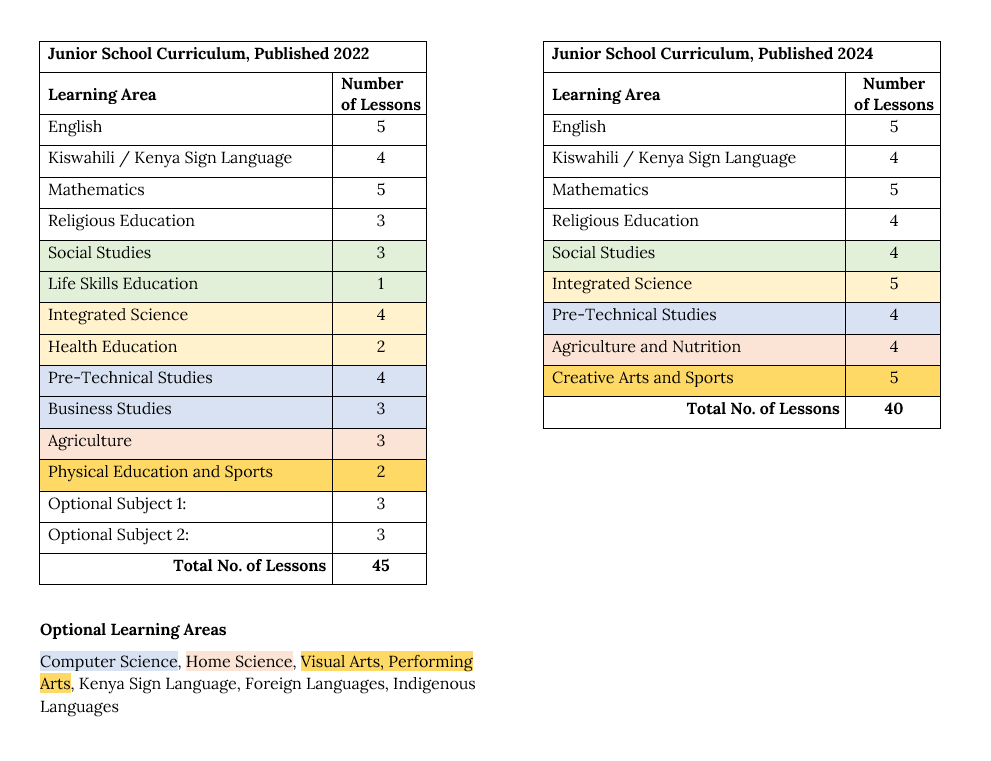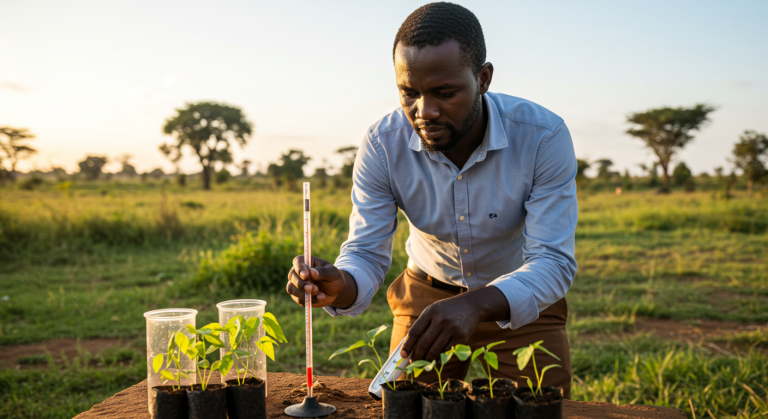In December 2023, the Kenyan government introduced changes to the Competency Based Curriculum (CBC), based on some of the recommendations from the Presidential Working Party on Education Reform (PWPER).
The changes announced hinge on the PWPER’s recommendation to rationalise the number of learning areas and curriculum designs to reduce overload, overlaps and gaps. This means a reduction of learning areas and the content, through the integration of existing learning areas.
Changes in Lower Primary
The key changes that have taken place are the reduction of learning areas from 8 to 7 and a further reduction in the number of lessons per week from 35 to 31.
This reduction was realised through:
- Integrating Hygiene & Nutrition with Environmental Activities in a new learning area called Environmental Activities.
- Making changes to the structure and content of Movement & Creative Activities and renaming it to Creative Activities

It is important to note that in April 2022, the Government introduced changes in the Lower Primary curriculum centred around the Language Activities. These changes did not reduce the overall number of learning areas or lessons instead, they assigned more lessons to English and Kiswahili, and at the same time renamed Literacy Activities to Indigenous Language Activities.

Changes in Upper Primary
The change in the Upper Primary curriculum is the reduction in the overall number of learning areas from 11 to 8 and the reduction in lessons per week from 40 to 35.
This reduction was realised through:
- Integrating Home Science with Agriculture in a new learning area called Agriculture & Nutrition.
- Integrating Physical Health Education with Creative Arts in a new learning area called Creative Arts.
- Removal of Other Languages as a required learning area, freeing schools to implement it as a co-curricular programme.

Changes in Junior School
Junior School (formerly called Junior Secondary School) saw the most significant change. The number of learning areas was reduced from 14 to 9 while the number of lessons was reduced from 45 to 41.
This change was realised through:
- Integrating Life Skills with Social Studies in a new learning area called Social Studies.
- Integrating Home Science with Agriculture in a new learning area called Agriculture & Nutrition.
- Integrating Computer Studies, Business Studies and Pre-Technical Studies in a new learning area called Pre-Technical Studies.
- Integrating Physical Education & Sports, Visual Arts and Performing Arts in a new learning area called Creative Arts & Sports.
- Removal of optional learning areas as a requirement

This level saw the most change, mainly because of feedback from stakeholders following one year of implementing the Junior School curriculum. Many schools struggled to deliver the 9 compulsory and 5 optional learning areas.
To still retain the flexibility of the curriculum in preparing students to take up specialisations in Senior School (Grade 10 to 12), the revised curriculum has integrated the various optional learning areas into the 9 compulsory ones.
Indigenous languages, foreign languages and Kenya Sign Language (KSL) remain the exception though, these shall be offered as optional co-curricular activities.







